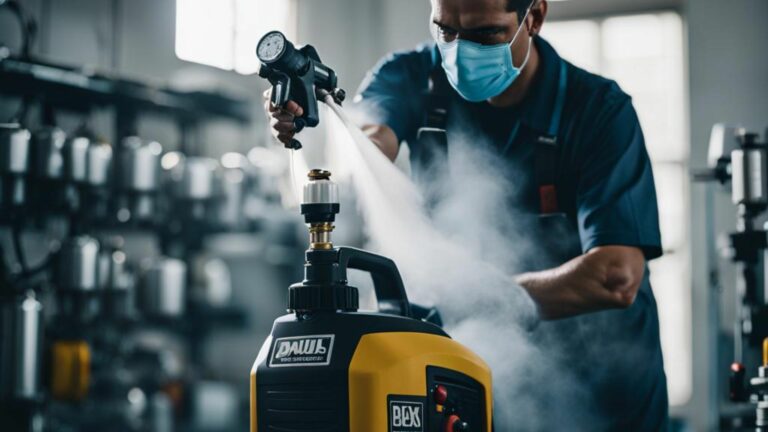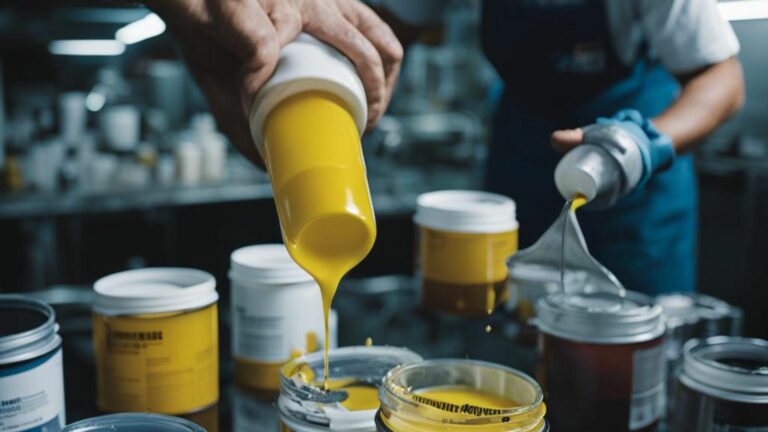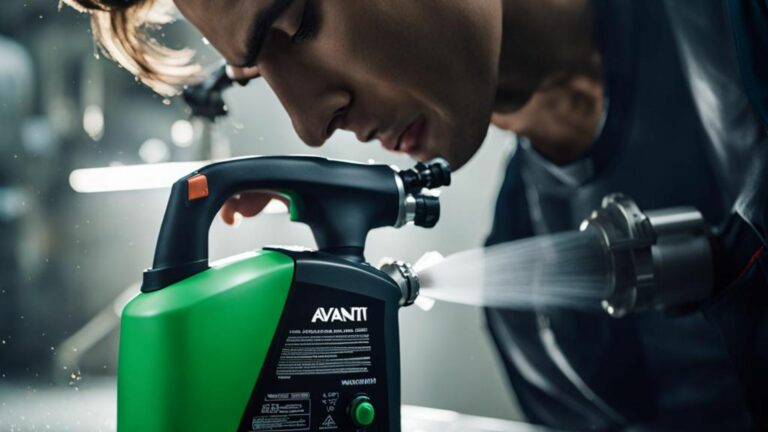
Do you have to thin paint for an HVLP sprayer? The answer is yes, but it depends on various factors.
In this ultimate guide, we’ll discuss everything you need to know about thinning paint for an HVLP sprayer, from the basics to the advanced techniques.
What is the Viscosity Cup Method?
One way to determine if your paint needs thinning is through a viscosity cup. A viscosity cup is a container with a small hole at the bottom that you fill with paint, and time, how long does it take to empty?
If the paint drips too slowly, it’s too thick and needs thinning. However, every paint brand has different recommended viscosities, so check the label and follow the instructions.
When Should You Thin Your Paint?
You should thin your paint when it’s too thick to spray correctly. Thick paint can clog your HVLP gun, create an uneven coat, or cause sputtering.
Also, some paints, such as enamel or lacquer, need thinning to achieve the desired viscosity.
How to Thin Your Paint?
The best way to thin your paint is to follow the manufacturer’s instructions. Usually, you’ll need to add a solvent, such as water, mineral spirits, or lacquer thinner.
A good rule of thumb is to add 10% to 20% thinner and mix well.
Test the paint viscosity by spraying a small area on a test surface, such as cardboard, before spraying your project.
What Should You Consider When Thinning Paint?
The amount and type of thinner you use depend on several factors, such as the paint type, the surface you’re painting, the temperature and humidity, and the desired finish.
For instance, water suits latex or acrylic paint, while mineral spirits are better for oil-based paint. Always wear a respirator, gloves, and eye protection when handling solvents.
What if Your Paint is Too Thin?
If your paint is too thin, it can create drips, runs, or dry too fast. In this case, you might need to add a paint thickener or reducer to adjust the viscosity.
Again, follow the manufacturer’s instructions and test the paint before spraying your project.
Can You Use Unthinned Paint for an HVLP Sprayer?
Some HVLP sprayers claim to spray unthinned paint. However, most experts recommend thinning the paint, even for these guns, to achieve better results.
Unthinned paint can create splatters, clogs, or a rough texture.
What Are the Benefits of Thin Paint for an HVLP Sprayer?
Thinning your paint has several benefits, such as:
- Saves you time and money: Thinned paint sprays faster and covers more area, so you’ll need fewer coats and less time to complete your project.
- Improves the finish: Thinned paint creates a smooth, even, glossy finish that looks professional.
- Avoids clogs: Thin paint reduces the risk of clogging your HVLP gun, which can damage it and create frustration.
- Minimizes waste: Thinned paint reduces overspray and drips, reducing paint waste and cleanup.
What Are Some Tips for Using an HVLP Sprayer?
Using an HVLP sprayer requires some practice and technique. Here are some tips to keep in mind:
- Always wear protective gear, such as respirators, gloves, and goggles.
- Test the paint viscosity on a test surface before spraying your project.
- Hold the gun perpendicular to the surface and move it consistently and evenly.
- Keep the gun at a distance of 6 to 8 inches from the surface.
- Overlap each pass by 50% to avoid streaks or missed spots.
- Clean your HVLP gun thoroughly after each use to prevent clogs and damage.
Conclusion
To sum up, thinning paint for an HVLP sprayer is essential for achieving a smooth and even finish without clogs or spray problems.
Follow the manufacturer’s instructions and choose the right thinner for your paint, surface, and desired finish.
Test your paint viscosity before spraying, wear protective gear, and practice your technique. With these tips and tricks, your DIY projects will look like a professional did them. Happy painting!






